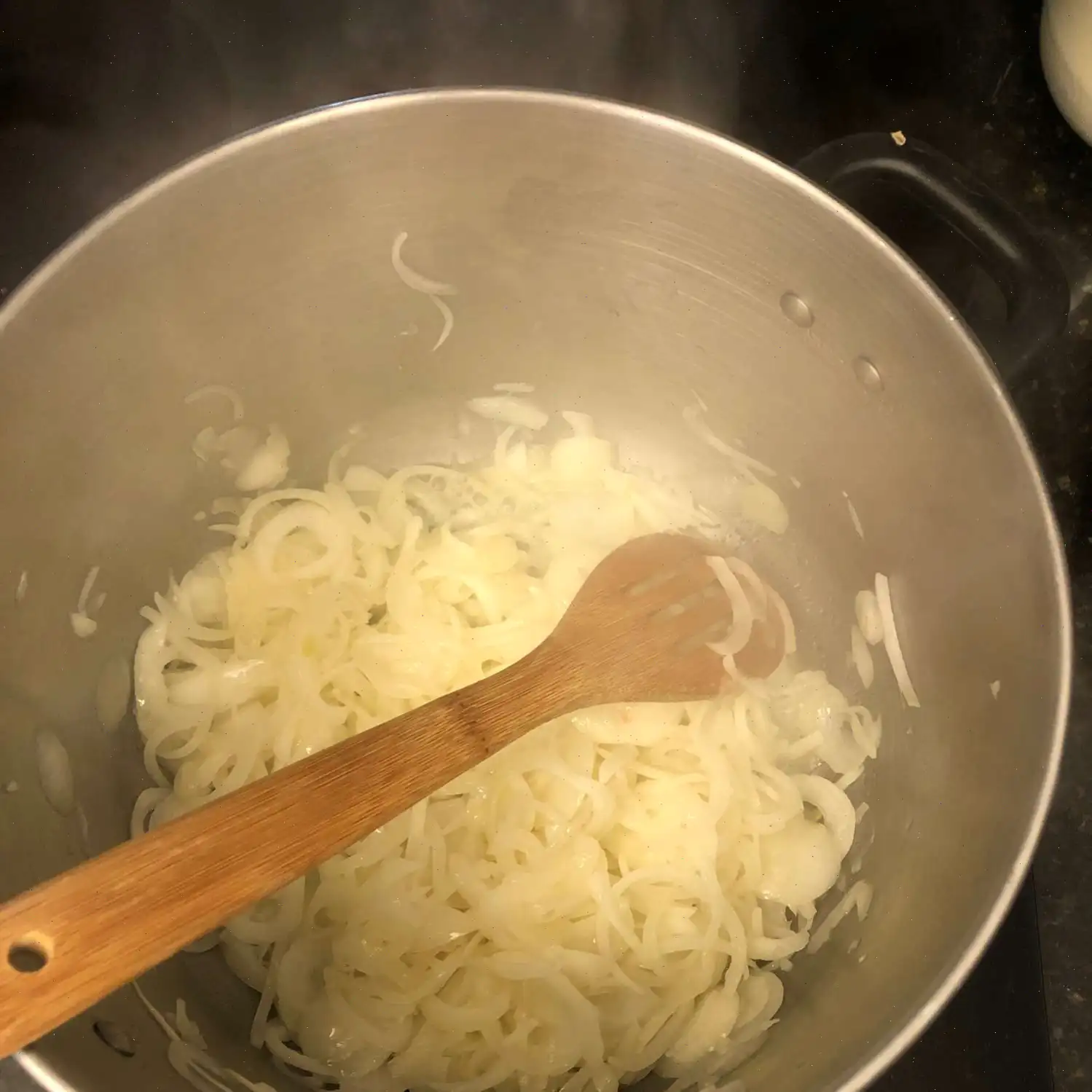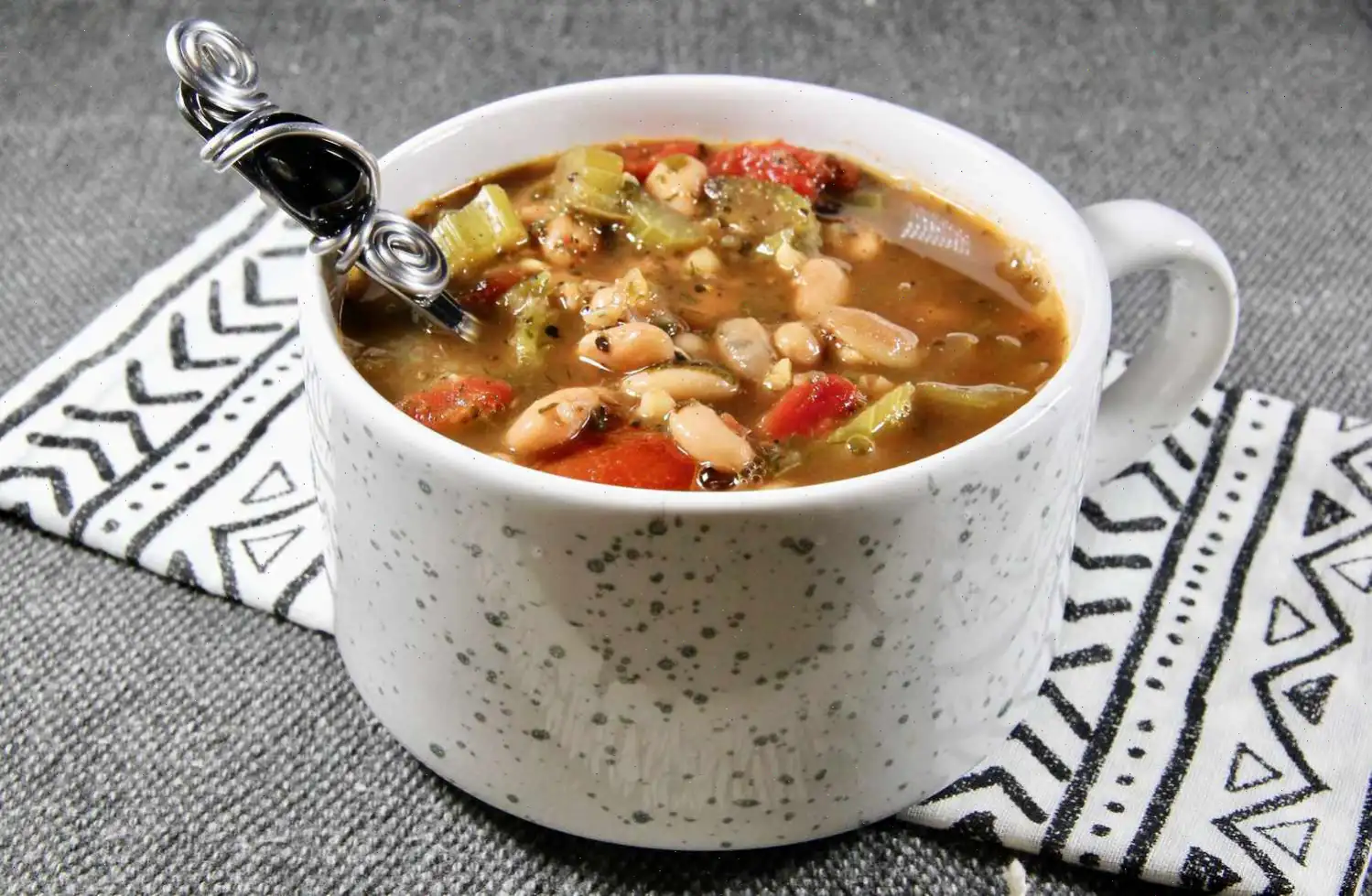
Beef Nilaga Recipe
Beef Short Ribs Soup
This hearty and flavorful beef short ribs soup is packed with tender meat and a variety of vegetables. It's the perfect comfort food for a chilly day, providing a satisfying meal for the whole family.
Ingredients
- 4 pounds beef short ribs
- 1 quart water
- 2 onions, chopped
- 1 tablespoon black peppercorns, crushed
- 2 beef bouillon cubes
- 2 potatoes, quartered
- 1 chayote squash, peeled and quartered
- 2 carrots, cut into chunks
- 2 stalks celery, quartered
- Salt to taste
- head cabbage, cut into wedges
Directions
Step 1: Place the beef short ribs into a large pot, ensuring there is enough water to cover them. Bring the water to a boil over high heat and let it boil for 5 minutes. Note that the ribs will not be fully cooked at this stage. Drain the water and discard it.
Step 2: Return the ribs to the pot, then pour in 1 quart of water. Add the chopped onions, crushed black peppercorns, and beef bouillon cubes. Bring everything to a boil once more. After it starts boiling, reduce the heat, cover the pot, and let it simmer for 1 hour. During this time, skim any fat that rises to the surface.
Step 3: After 1 hour, stir in the quartered potatoes, chayote squash, carrots, and celery. Cover the pot again and let it simmer for about 20 minutes, or until the potatoes become tender.
Step 4: Season the soup with salt to taste. Then, add the cabbage wedges to the pot and cook for an additional 5 minutes, allowing the cabbage to soften.
Nutrition Facts (per serving)
| Calories | 983 |
|---|---|
| Total Fat | 75g (97% DV) |
| Saturated Fat | 32g (160% DV) |
| Cholesterol | 168mg (56% DV) |
| Sodium | 491mg (21% DV) |
| Total Carbohydrate | 32g (12% DV) |
| Dietary Fiber | 7g (24% DV) |
| Total Sugars | 9g |
| Protein | 43g (86% DV) |
| Vitamin C | 50mg (56% DV) |
| Calcium | 108mg (8% DV) |
| Iron | 6mg (32% DV) |
| Potassium | 1182mg (25% DV) |
* Percent Daily Values are based on a 2,000 calorie diet. Your daily values may be higher or lower depending on your calorie needs.
** Nutrient information is not available for all ingredients. Amount is based on available nutrient data.
(-) Information is not currently available for this nutrient. If you are following a medically restrictive diet, please consult your doctor or registered dietitian before preparing this recipe for personal consumption.
Beef Nilaga is a traditional Filipino stew that has become a staple in Filipino households. This hearty dish features beef short ribs simmered in a savory broth with various vegetables, creating a comforting and nutritious meal. The combination of tender beef and wholesome vegetables makes it perfect for any occasion, from family gatherings to casual weeknight dinners.
History of Beef Nilaga
Nilaga, derived from the Filipino verb "nilaga," which means "to boil," is a classic Filipino dish that reflects the simplicity and resourcefulness of traditional Filipino cooking. The dish has roots in the colonial period, when boiled meats and vegetables were commonly prepared as a way to stretch ingredients and create hearty, filling meals for large families. Although Nilaga has many variations across the Philippines, beef Nilaga specifically uses beef short ribs as its base, providing a rich and flavorful broth. Its often considered a comfort food, especially during the cooler months or when someone is feeling under the weather.
Regional Variations
While Nilaga is a nationwide dish, regional variations often include different vegetables or cuts of meat. In Luzon, you'll commonly find Nilaga made with beef short ribs or oxtail, while in Visayas and Mindanao, pork or chicken may be used instead. Some regions also incorporate local ingredients, such as sweet potatoes or even plantains, to add a unique twist. The addition of certain vegetables like chayote, cabbage, and corn may also differ depending on the region, reflecting local preferences and available produce.
What Sets Beef Nilaga Apart
Beef Nilaga differs from similar stews or soups in other cuisines due to its emphasis on a clear, lightly seasoned broth. Unlike richer stews like beef stew or pot roast, which often have a thick gravy base, Nilaga's broth is intentionally kept simple, allowing the natural flavors of the beef and vegetables to shine. Additionally, Nilaga is less spicy compared to other Filipino dishes, relying on the umami flavors of beef and aromatics such as onions and peppercorns to enhance the taste. The inclusion of vegetables like chayote, potatoes, and cabbage also gives Nilaga a fresh, light feel that contrasts with more intense, spicy stews.
Where Beef Nilaga is Typically Served
Beef Nilaga is commonly served in Filipino homes and is especially popular during family gatherings or special occasions. It is often enjoyed as a main dish during lunch or dinner, paired with steamed white rice. Nilaga is also a go-to comfort food for the sick or elderly, as its gentle flavors and nourishing ingredients are easy on the stomach. In many Filipino households, Nilaga is served alongside "patis" (fish sauce), which allows each person to season their soup according to their own taste. This practice of customizing the flavor with fish sauce or soy sauce is a hallmark of Filipino cuisine, where personalization is key.
Interesting Facts about Beef Nilaga
1. Nilaga is often cooked slowly to extract the full flavor of the beef and to achieve tender, fall-off-the-bone meat.
2. The dish is believed to have healing properties, which is why it is often made for sick family members or the elderly. The light broth and nourishing ingredients are thought to aid in recovery.
3. Despite its simple ingredients, Nilaga can be quite versatile. Some people add plantains or corn to enrich the flavor, while others might use a variety of leafy greens like bok choy or napa cabbage.
4. In the Philippines, Nilaga is also known as a "soup for the soul." Its uncomplicated yet comforting nature has made it a favorite across generations.
5. The dish is highly adaptable to dietary preferences, as it can be made with chicken or pork for those who prefer a different meat base.
You can listen to this recipe in AI audio format. Simply click the play button below to listen to the content in a format that suits you best. It’s a great way to absorb information on the go!








